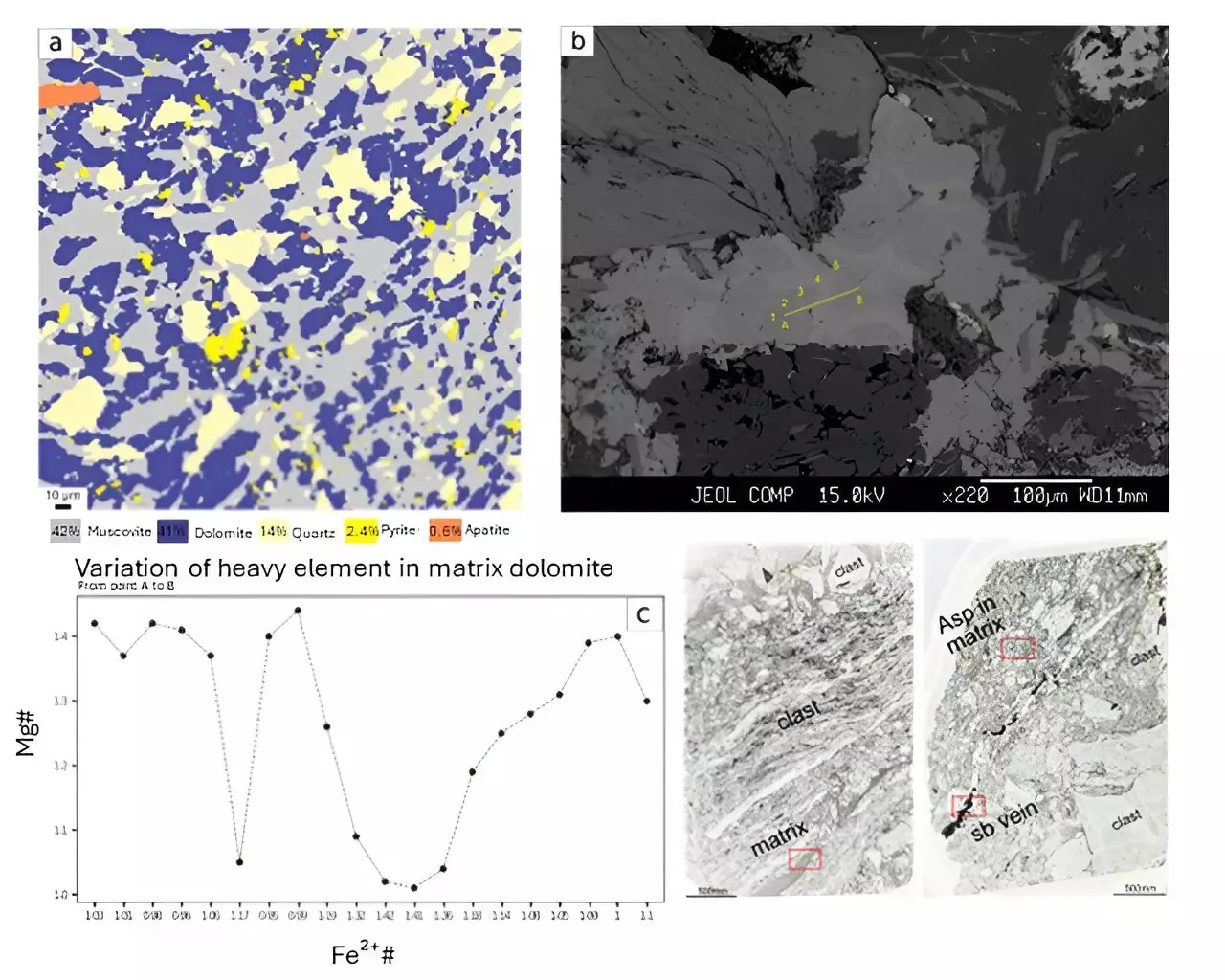On a research field trip to the Ichinokawa Mine in Ehime prefecture, Noriyoshi Tsuchiya, a professor at the Graduate School of Environmental Studies and the Hachinohe National College of Technology, made a surprising discovery. While most people would be captivated by the sword-shaped stibnite crystals in the mine, Tsuchiya found himself intrigued by a sedimentary rock bundle known as breccia. This unexpected find led to a groundbreaking study on the traces of earthquakes and the estimation of past earthquake energy.
Breccia, a type of rock composed of angular fragments, plays a crucial role in recording the history of seismic activity in a region. The breccia found in the Ichinokawa Mine is particularly unique as it retains a record of the frequent seismic activity along the Median Tectonic Line (MTL), a fault line that spans approximately 1,000 kilometers in the southwest region of Japan. The study conducted by Tsuchiya and their team shed light on the valuable evidence preserved in the breccia, allowing for the estimation of past earthquake energy.
The researchers employed a multi-disciplinary approach to assess the fragmented rocks both in the field and in the lab. By extracting thin sections of the rocks for microscopic observation, they were able to analyze the angular deformation and powdery texture of the rocks at various scales. Through statistical and fractal analyses, the team successfully estimated the energy dissipated by past earthquakes, revealing a surface energy significantly greater than that produced by a single impact fracture in a laboratory setting.
Close examination of the breccia led to the discovery of carbonates such as CaMg(CO3)2, indicating subsequent mineral formation post-earthquake events. The researchers concluded that the Ichinokawa breccia was the result of multiple earthquakes, rather than a single event, causing the gradual pulverization of particles. The estimated moment magnitude of these earthquakes ranged from 5.8 to 8.3 Mw, highlighting the destructive potential of seismic activity in the region.
The study challenges previously established models of earthquake history, which focused on hydrofracturing as the primary mechanism. By adopting a comprehensive approach that considers various factors, Tsuchiya and their collaborators from the National Institute of Technology and Hachinohe College proposed a new model that accounts for the unique pattern of fragmentation observed in the breccia. This research has the potential to redefine our understanding of the coseismic energy budget in regions prone to seismic activity.


Leave a Reply